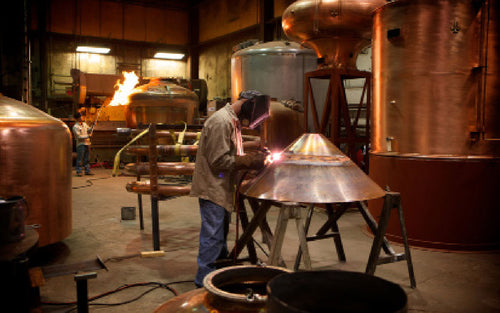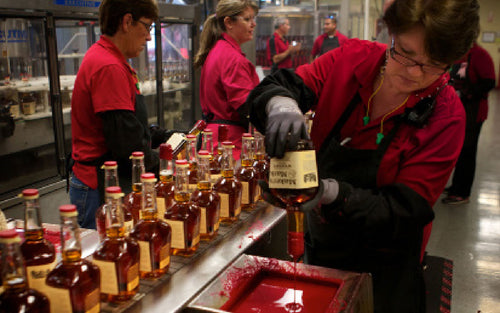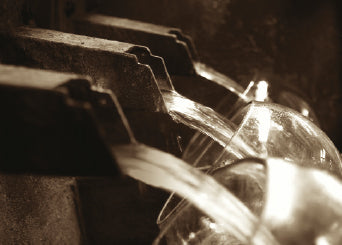
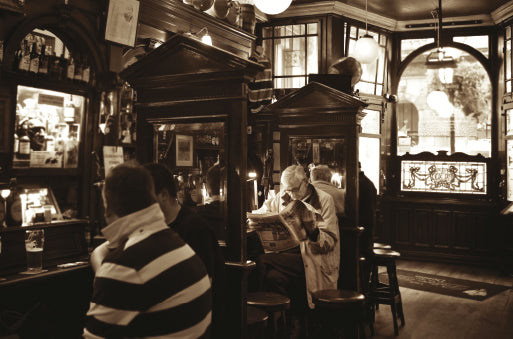
The Bonders
There was a time when every town in Ireland had its own particular flavour of whiskey. The Golden Age of Irish whiskey saw hundreds of distilleries operating on the Island of Ireland. There were few brands of Whiskey at that time, rather most distilleries simply made their whiskey and sold it wholesale to public house owners for bonding. They would travel to their local distillery with their barrels, have them filled up with new make whiskey and then cart them home and store them for ageing or blending. Because so much of whiskeys’ flavour comes from the barrel it is aged in, and the climate where that barrel is stored, this meant that there was a tremendous variety of regional flavours within Irish Whiskey.
KILBEGGAN DISTILLERY
The locals from this small Irish town are inspirational, in 1953 another Excise tax increase led to the closure of their much-loved distillery. Rather than taking it on the chin, they pulled together and acquired a caretaker’s lease to keep the distilling licence going. Over the next 50 years, teams of dedicated, hard-working volunteers renovated the crumbling site and in 2007 distilling recommenced. It has been said that the monogrammed chimney which still stands proudly at the centre of the distillery is a metaphor for the backbone of this tight-knit community.
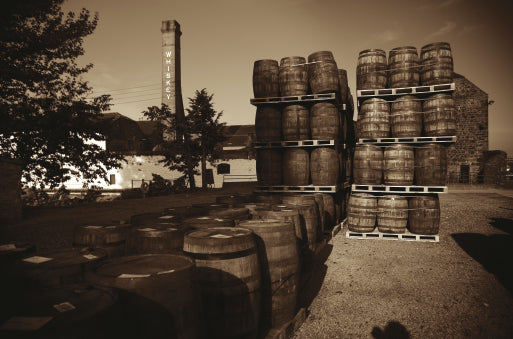
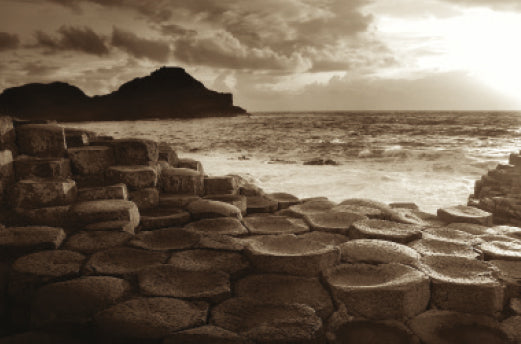
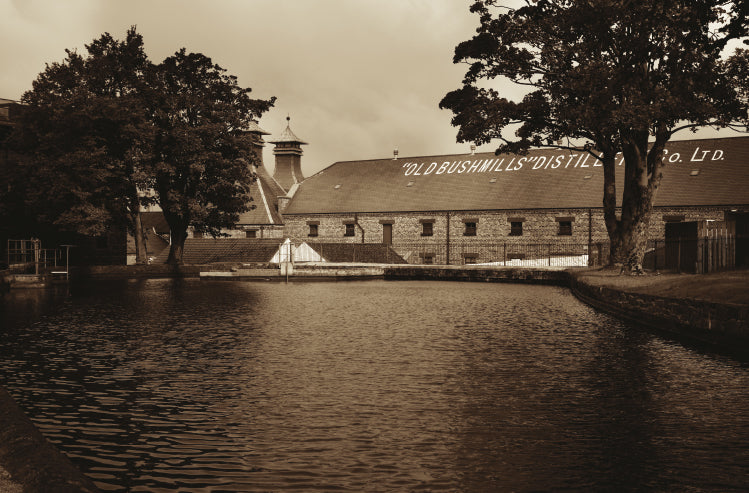
Bushmills Distillery
Some 6,000 coopers once worked this artisan trade in Ireland, building and maintaining wooden barrels and casks for the thriving whiskey industry that became Ireland’s calling card around the world. Today there are only six coopers left in Ireland, North and South. You will find two of them in the Cooperage in the Old Bushmills Distillery. Chris Kane is the newest recruit and joins his father Alastair in a family business that has charted four generations. Chris’s great-grandfather Jimmy Kane started his own journey here in 1935. It is a wonderful story of home, authenticity and a well-worked life: grandparents, parents, uncles, aunts and cousins of the Kane family have all been employed at Bushmills across generations, there can be no underestimating the role the distillery has played in their lives – and that of the town of Bushmills overall.

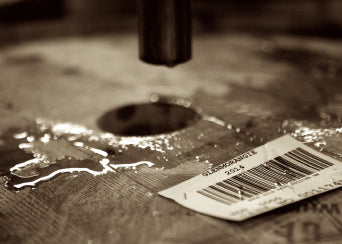

BOWMORE DISTILLERY
Bowmore distillery is proud of its environmental credentials. In 1990 it donated one of its warehouses to the community for conversion into a swimming pool.
The water is heated to a comfortable temperature by the waste steam from the stillroom condensers.

ICONIC PAGODAS
The Asian-style, kiln ‘pagoda head’ regarded as a symbol of Scotch whisky distilling throughout the world, was the work of the 19th-century distillery designer by Charles Chree Doig, who through his working life is credited with professional involvement in no fewer than 56 Scottish distilleries. It is ironic that Doig’s ‘signature’ pagoda, which still adorns so many older distilleries, rarely has any practical use today. Only a handful of Scottish distilleries continue to malt their own barley, rendering the pagodas of most purely ornamental.
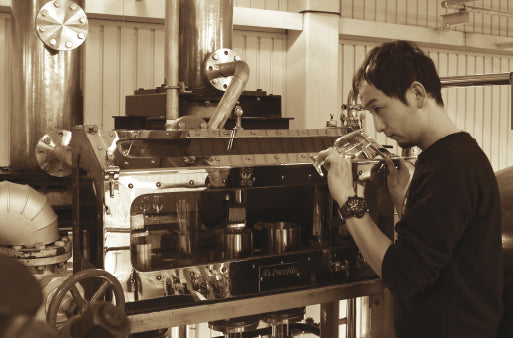
CHICHIBU DISTILLERY
Just over a decade ago, it took all of Ichiro Akuto’s powers of persuasion to convince a bank to lend him the money to open a whisky distillery. Today, despite working out of modest premises with just two tiny pot stills in the hills of Chichibu, a town 100 km northwest of Tokyo, Akuto’s single malts are winning rave reviews from the global whisky cognoscenti. Many are willing to pay hundreds of dollars – and in a few cases much more – for a bottle of single malt from what is Japan’s smallest distillery. The British publication, Whisky Magazine, has consistently given awards to Akuto’s firm, Venture Whisky, and its range of “Ichiro’s” single malts now rival those from the bigger and more established Japanese distillers Suntory and Nikka.
Tokyo Whisky Bars
Throughout the 2000s, Japan has regularly scooped top prizes at international whisky competitions, completely transforming the once-suspect reputation of its domestic malts, but the revolution seems to have picked up, even more pace over the last few years. Whisky Bible’s pick of a Yamazaki Single Malt as the ‘world’s best whisky’ in 2015 and NHK’s morning TV drama ‘Massan’ both had a massive impact. The popular show, which told the story of Masataka Taketsuru and his wife Rita, also hinted at the Scottish roots of Japanese whisky. It was after all Taketsuru who travelled to the Glens in 1918 to learn Scotland’s trade secrets before opening Japan’s first whisky distillery. Tokyo, Japan’s kaleidoscopic capital, a place brimming with neon skyscrapers, vibrant lights and an infectious energy is home to numerous whisky-dedicated bars that all offer a vast array of the worlds best whiskies making it the perfect city to compare and contrast offerings from the east and the west.

NIKKA
Founded in 1934 by Japan’s first master distiller, Masataka Taketsuru, Nikka has risen to become Japan's second-largest distiller, producing a wide range of single malts as well as their impressive blended whisky range. While waiting for his first whisky to mature, Masataka ran a fruit juice company using local Hokkaido apples. Initially operating under the name “Dai Nippon Kaju”, meaning the “great Japanese juice company”, the company name was officially changed to Nikka Whisky, a contraction of NI-ppon and KA-ju, in 1940.

